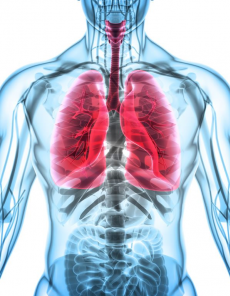

Cystic Fibrosis: A major advance in the scientific studies for the molecular mechanisms, symptoms and treatments
What is Cystic Fibrosis?
Cystic fibrosis is an inherited genetic condition that affects the ability of cells to control the movement of salt and water between one another, due to the impaired plasma membrane. The faulty movements cause a build-up of sticky mucus on the lungs and digestive system resulting in problems with breathing and vulnerability to infection. The disease of the membrane results in an accumulation of ions within the cell.
Hypertonic saline is a sterile solution, rich in salts to replace ions that failed to transport through CFTR channels. The solution is inhaled, generating an osmotic gradient, and therefore thins the mucus by the ions drawing water in to hydrate it. Other methods of alleviating mucus viscosity involve medication. N-acetylcysteine cleaves disulphide bonds in mucus glycoproteins and dornase alfa nuclease break down the nucleic acids present in mucus.
Pancreatic blockage can be addressed by enzyme replacement. Enzyme replacement therapy can improve a patient’s quality of life by helping them gain weight, and grow. As a substitute for nutrients not being absorbed, nutritional supplements can be administrated. For example, osteoporosis can be averted through a vitamin D rich diet.
Genetic treatments are aimed at correcting specific mutations. Currently adenovirus is used as a carrying vector of corrected CFTR gene copies. The somatic gene therapy involves the adenovirus carrying double stranded DNA into the host cells’ nucleus where the DNA can be transcribed. Unfortunately, the effects of this therapy are not permanent as the corrected gene will not continue to be expressed after cell division. This is because the adenovirus DNA does not intermix with the host genome. A patient must undergo several treatments to maintain the effects. Further research takes place to find more effective methods of gene therapy. Although viral vectors are highly effective, immune response risks are a concern.
Antibiotic treatments fight bacterial infection; macrolide antibiotics are commonly used for treating cystic fibrosis related infection as they can suppress secretions that obstruct airways. They operate by inhibiting protein synthesis through binding to the ribosomal 50s subunits. If absolutely necessary, lung transplant may be performed. This only happens in severe cases where it is appropriate. Both lungs must be replaced to inhibit the chance of the new lung being contaminated by bacterial infection.
Conclusively, although major improvements have been made, there is still a way to go with fully understanding CFTR and dysfunction related to cystic fibrosis. Rigorous research has shifted, rather than the focus being treatment of symptoms, it is now about treating the underlying problems of cystic fibrosis. Drugs like VX-770 focus on epithelial cell chloride channels. Currently, CFTR is greater understood than the diseases pathogenesis. There is hope for gene therapy being the way forward, and there is a need is for gene expression to last longer. As long as the scientific research is financially supported, it can continue to improve.
Image: https://aridispharma.com/cystic-fibrosis/

0 Comment:
Be the first one to comment on this article.